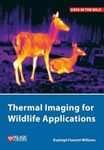![Quantitative Analysis of Marine Biological Communities Quantitative Analysis of Marine Biological Communities]()
Click to have a closer look
About this book
Contents
Customer reviews
Biography
Related titles
About this book
This book provides comprehensive coverage of quantitative methods in field biology, experimentation, environment, and marine sciences. With a focus on marine biology and ecology, it presents typically complex sampling and mathematical techniques in a simple manner, complete with examples.
Contents
Preface.Acknowledgments.Contributors.1. Biological Sampling Design and Related Topics.1.1 Profi ling Methods and Underwater Techniques.1.1.1 Introduction.1.1.2 Profi ling a Beach.1.1.3 Underwater Profi les.1.1.4 Underwater Techniques.1.2 Sampling Populations.1.2.1 Introduction.1.2.2 Sampling Design.1.2.3 Physical-Chemical Factors.1.2.4 Timing of Sampling.1.2.5 Size of the Sampling Area.1.2.6 Scale.1.2.7 Modus Operandi.1.2.8 Sample Size or Number of Sample Units Required.1.3 Quantitative Sampling Methods.1.3.1 Introduction.1.3.2 Table of Random Numbers.1.3.3 Quadrat Shape.1.3.4 Optimal Quadrat Size.1.3.5 Simple Random Sampling.1.3.6 Haphazard (Convenience, Accidental, Arbitrary) Sampling.1.3.7 Stratifi ed Random Sampling.1.3.8 Systematic Sampling.1.3.9 Fixed Quadrats.1.3.10 Point Contact (Percentage Cover).1.3.11 Line and Belt (Strip) Transects.1.3.12 Adaptive Sampling.1.3.13 Sequential Sampling.1.3.14 Rapid Sampling Methods.1.3.15 Introduction to Plotless Sampling.1.3.16 Best Guess or Estimation.1.3.17 Catch or Weight Per Unit Effort (CPUE).1.3.18 Coordinate Lines.1.3.19 Cluster Sampling.1.3.20 Introduction to Distance Measurements.1.3.21 Nearest Neighbor and Point to Nearest Object.1.3.22 Point-Center Quarter or Point Quarter Method.1.3.23 Line Intercepts.1.3.24 Strong Method.1.3.25 Weinberg Method.1.3.26 Nishiyama Method.1.3.27 Mark (or Tag) and Recapture (Mark and Resight) Techniques.1.3.28 Visual Methods for Fishes.1.3.29 Narcotizing Agents and Poison Stations.1.4 Other Methods of Estimating the Abundance of Populations.1.4.1 Comparison of Estimated Populations with Other Methods.1.4.2 Removal Trapping or Collecting.1.4.3 Other Methods.1.4.4 Large Scale Sampling.2. Types of Data, Standardizations and Transformations, Introduction to Biometrics, Experimental Design.2.1 Introduction.2.2 Types of Data.2.3 Data Standardization or Normalization (Relativization).2.4 Data Transformation.2.5 Statistical Distributions and Procedures.2.6 Descriptive Statistics (Sample Statistics).2.7 Statistics with One or Two Variables.2.8 Experimental Design and Analysis.2.9 Power Analysis.2.10 Multiple Comparisons Tests.2.11 Nonparametric Tests, Covariance, Correlation, and Regression.2.12 Multivariate Statistics.2.13 Ranking Analysis (Nonparametric Correlation).2.14 Randomization Methods.2.15 General Linear Programming.2.16 Maximum Likelihood.2.17 Bayesian Statistics.2.18 How to Lie with Statistics.3. Quantitative Methods in Field Ecology and Other Useful Techniques and Information.A. Introduction.3.1 Introduction.B. Population Patterns.3.2 Distributions (Dispersion).3.3 Dispersal.3.4 Home Range.3.5 Random Walk.3.6 Feeding Ecology.C. Population Growth.3.7 Size-frequency Distribution.3.8 Growth of Individuals in a Population.3.9 Natality.3.10 Mortality.3.11 Construction of Life Tables.3.12 Population Dynamics Models.3.13 Population Growth and Productivity.3.14 Null Models.D. Diversity and Related Indices.3.15 Species Richness, Diversity, Evenness, and Dominance.3.16 Keystone Species.3.17 Homogeneity-Heterogeneity Indices.3.18 Niche Breadth.3.19 Niche Overlap.3.20 Concordance.E. Advanced Topics.3.21 Game Theory.3.22 Optimality or Optimization Models.3.23 Transition Matrices.3.24 Fractals.3.25 Deterministic Chaos.3.26 Artifi cial Neural Networks.3.27 Expert Systems.3.28 Digitization, Image Processing, Image Measurement, and Image Analysis or Pattern Recognition.3.29 Multimedia Development.3.30 Landscape Ecology.3.31 Aquatic Ecotoxicology.3.32 Coastal Zone Management.3.33 Conservation and Environment.3.34 Environmental Impact Assessments.3.35 Analysis of DNA/RNA Sequences.3.36 Fuzzy Logic.3.37 Meta-Analysis.4. Community Analyses: Similarity-Dissimilarity Indices, Cluster Analysis, Dendrograms, Analysis of Similarities, Indicator Species.4.1 Introduction.4.2 Methods of Handling Data.4.3 Measures of Similarity and Difference (Similarity and Dissimilarity).4.4 Cluster Analysis.4.5 Species-Site Groups.4.6 Mantel Test.4.7 Analysis of Similarities.4.8 Indicator Species Analysis.5. Community Analysis: Ordination and Other Multivariate Techniques.5.1 Introduction.5.2 Principal Component Analysis.5.3 Factor Analysis (FA).5.4 Redundancy Analysis.5.5 Correspondence Analysis (CA) or Reciprocal Averaging (RA).5.6 Detrended Correspondence Analysis (DCA or Decorana).5.7 Nonmetric Multidimensional Scaling (MDS, NMDS, NMS, NMMDS).5.8 MANOVA and MANCOVA.5.9 Discriminant Analysis (DA) (Discriminant Function Analysis, Canonical Variates Analysis).5.10 Principal Coordinate Analysis (PCoA) (Metric Multidimensional Scaling).5.11 Canonical Correspondence Analysis (CCA).5.12 Multiple Regression (MR) (Multiple Linear Regression).5.13 Path Analysis.5.14 Canonical Correlation Analysis (CANCOR).5.15 Canonical Variate Analysis (CVA).5.16 Multi-Response Permutation Procedures (MRPP).5.17 Other Multivariate Techniques.6. Time Trend Analysis.A. Introduction.6.1 Introduction.B. Time Series Analysis.6.2 Smoothing or Filtering Techniques.6.3 Serial Correlation (Auto- and Cross-Correlation).6.4 Autoregression.C. Frequency Analysis.6.5 Frequency Analysis.7. Modeling and Systems Analysis.7.1 Introduction.7.2 Philosophy of Modeling.7.3 Model Components and Model Development.8. Marine Sampling and Measuring Devices.8.1 Introduction.8.2 Oceanographic Devices.8.3 Marine Bottom Sampling Devices.8.4 Marine Water Sampling Devices.8.5 Sampling Plankton, Bacteria and Viruses.8.6 Sampling Fishes.8.7 Sampling Reptiles, Birds and Mammals.8.8 Natural History Observations.Appendices.Addendum.References.Index.
Customer Reviews
Biography
GERALD J. BAKUS, PHD, is Professor of Biology at the University of Southern California. He has more than five decades of experience in biology and the marine sciences. In addition to his many published research and review articles, Dr. Bakus is the author of Quantitative Ecology and Marine Biology and Coral Reef Ecosystems.



































